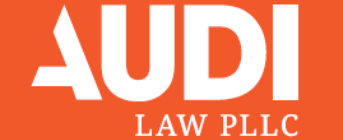When Congress passed, and the President signed, the new Covid relief bill at the end of December, it not only included another round of stimulus checks, but also a new round of funding for the Payroll Protection Program (“PPP”). The PPP is the program that granted loans to small businesses in order to help them maintain payroll and cover some other expenses during the Covid-19 Pandemic. The majority of these loans are forgivable – which means that small businesses that take out the loans will NOT have to pay them back, provided that some guidelines are met. If the guidelines are not met, then the loans must be paid back with attractive interest rates of 1%.
This is the type of program that it is very important for small businesses to take advantage of. Large corporations and successful businesses take advantage of every available route of funding – especially government grants and loans. These loans are funded from your tax dollars (now and in the future) so it is in the interest of every small business to take advantage of this program and any others that may provide you with the capital needed to survive this global pandemic.
Some important points about the PPP Loans:
–Sole Proprietors are eligible for these loans. Don’t be fooled by the term “payroll” into thinking that you must have employees. Your own income from your business is included in the definition of payroll and qualifies sole proprietors for the program.
-Generally, the loan will be given in an amount that is equal to two and a half months of your pre-pandemic (2019) average payroll. If you are a sole proprietor, take your 2019 gross income, divide by 12 and then multiply by 2.5 to get the total estimated eligibility.
-The funds are to be spent on eligible expenses during an 8- or 24-week window following the disbursement of the loans. You can choose whichever window makes more sense for you in order to qualify for forgiveness.
-In order to qualify for loan forgiveness, at least 60% of the PPP loan must be spent on payroll costs during the 8 or 24 week window. Again, this also includes sole proprietors paying themselves.
-The remaining balance of the PPP loan may only be spent on certain expenses to be forgivable. This includes rent and utilities as well as costs to purchase or install sneeze guards, personal protective equipment, switch to outdoor dining and other expenses to make a business safer during the pandemic.
-Businesses that received a PPP loan in the summer of 2020 ARE eligible for a new PPP loan in 2021, as long as they have already exhausted the original loan and can show at least a 25% drop in gross receipts in any quarter in 2020 compared to the same quarter in 2019. Businesses that started in 2020 are still eligible, but will have a separate formula to apply.
PPP Loans are available from many lenders, including traditional banks as well as local credit unions and online lenders. If you need assistance in reviewing or filling out loan paperwork, please give us a call.

